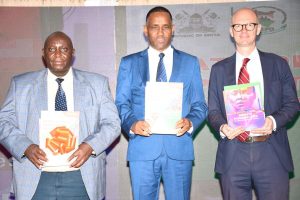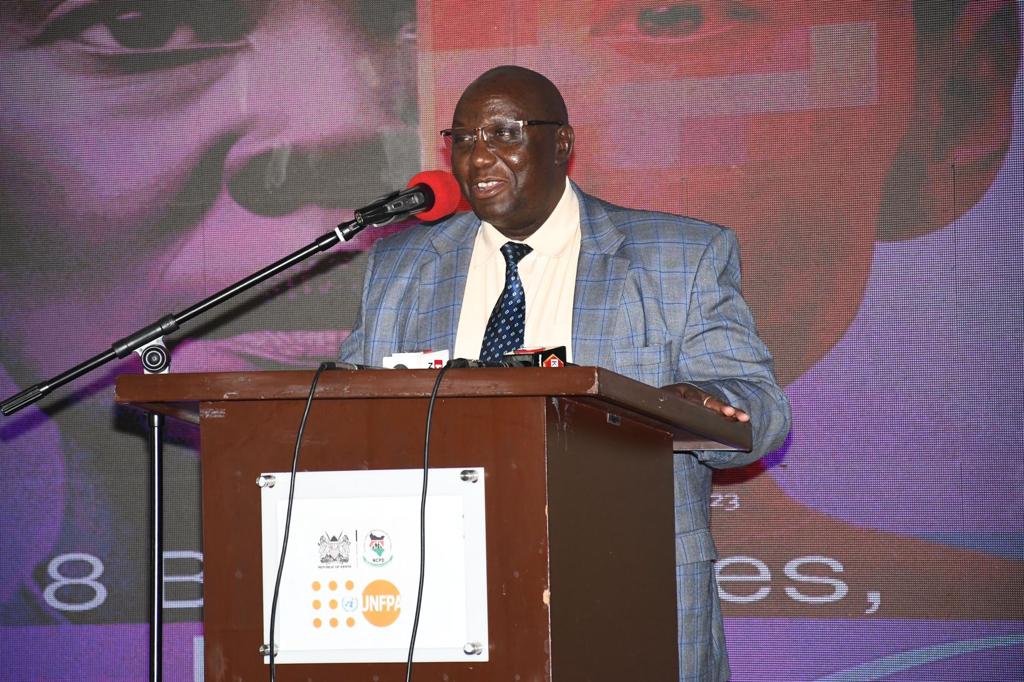The Annual State of Kenya and State of World Populations reports 2023 launch
Kenya has made a tremendous progress in reducing her rapid population growth that was identified by Sessional Paper No. 10 of 1965 on African Socialism and its application to planning in Kenya as an impediment for realization of National Development aspirations, said PS James Muhati.
In a speech read on his behalf by the Ag. Economic Planning Secretary Timothy Gakuo during the launch of Kenya and State of World Population reports, 2023, the PS noted that the event had brought together different stakeholders to share global and National contemporary population issues and trends which will inform the development agenda up to the year 2030 and beyond.
The theme of the State World Population Report 2023 is “8 billion lives, Infinite Possibilities: The case for rights and choices.”
The theme was coined at a time when the World Population had reached 8 billion people and was domesticated and the theme of the State of Kenya Population Report is “Population Anxiety.”
Since 2009, Kenya has registered improvement in demographic indicators with population size increasing with almost one million per year from 37.7 million in 2009 to 47.6 million in 2019. Kenya’s population is projected to reach 57.8 million by the year 2030.
Fertility level in Kenya has registered a decline since 1989 from an average seven children to three children per woman which means that the country is on course in achieving a replacement level fertility of 2.1 children per woman.
Meanwhile, children below age 15 years declined from 43% in 2009 to 39 per cent of the total population in 2019. The population of the youth grew from 3,201,192 in 1989 to 13,177,600 in 2019 and is projected to increase to 18,966,737 by 2035.
Working ages 15-64 increased from 53 in 2009 to 57 in 2019 per cent while the proportion of the population of the elderly aged 60 and above increased from 5 to 5.8 per cent.
As a result of improvement in the life expectancy that has increased among men from 58 years in 2009 to 61 years in 2019 and for women from 62 years in 2009 to 67 years in 2019, the older persons segment is the fasted growing population.
On Education and training, there has been a 9% growth with completion rate for basic education recording 85.6 per cent in 2022 while the total enrolment in both public and private universities increased from 568,653 in FY 2019/20 to 620,480 in FY 2021/22.
Kenya’s investment in health, education, economic and governance sectors offers an excellent opportunity for the country to harness the potential of young people in order to accelerate socio-economic development and well-being of her citizenry in the next few decades, observed Muhati.
Although mortality has been on the decline, the country has recorded increasing deaths from non-communicable diseases, accidents and injuries.
Kenya is urbanizing very rapidly with percentage of urban population to total population having increased from 5.3 per cent in 1948 to 31.2 per cent representing 14.8 million people in 2019. Additionally, the number of urban centres increased from 47 in 1969 to 372 in 2019.
Data from the 2022 Kenya Demographic Housing Survey indicates that 34 per cent of women in the country have experienced physical violence since the age of 15 years while 13 per cent have experienced an episode of sexual violence.
On climate change and its effects, evidence shows that increasing human activities is responsible for an increase in global warming with global surface temperatures reaching 1.10C above average recorded in the pre-industrial period of 1850 and 1900.
In recognition of the threats posed by climate change, Kenya has put in place measures which include development and implementation of National Climate Change Response Strategy in 2010, the National Climate Change Plan Action in 2013 and a revised one in 2018 to cover 2018-2022.
It also enacted the climate change Act No. 11 of 2016 and the Kenya National Adaptation Plan and Mitigation actions into sector functions of the National and County Governments.
During the African Climate Summit hosted in Kenya from 4th to 8th September, 2023, proposals were made on new financing architecture response to Africa’s needs including debt restructuring and relief and the development of a new global Climate Finance Charter through United Nations General Assembly and the COP processes by 2025.
The PS urged all Government agencies in collaboration with stakeholders to acquaint themselves with the Population Anxieties contained in the report and design appropriate intervention to address them to accelerate the achievements of development aspirations.
Present during the launch were the Director General, National Council Population Development, Dr. Shekh Mohammed and Director General Kenya National Bureau of Statistics MacDonald Obudho, among others.








